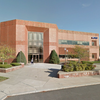Cracking The Code On RNAi
What does Mello’s prize-winning discovery do?
RNAi has garnered more than its fair share of attention lately. Being the subject of a Nobel Prize will do that.
But it has also left many in the area wondering one thing: Just what the heck is RNAi, or RNA interference, anyway?
2006 Nobel Prize winner Craig Mello of the UMass Medical School in Worcester, who won his Nobel Prize in Medicine for discovering RNAi at UMass in the late 90s, described it as “the Google of the cell.” It’s a catchy slogan, but what, exactly, does that mean?
Tod Woolf says that RNAi is essentially a different method for attacking ailments. Woolf was recently brought on by CytRx Corp. of California to serve as president and CEO of its subsidiary RXi Pharmaceuticals Corp. in Worcester, which was co-founded by none other than Mello.
Bio 101
First, a biology crash course. Our body functions, grows and adapts when genes in our cells produce messenger RNA, which in turn tells cells what kinds of protein to make, which determines our body functions.
Traditional medicines, Woolf said, work by bonding to “bad” proteins that, say, cause cancer. By preventing those proteins from accomplishing their given task, a drug cures an ailment.
RNAi works by preventing the genes from ever producing those proteins in the first place, effectively “turning off” the genes that produce the messenger RNA, Woolf explained.
The process discovered by Mello involves injecting a unique double strand of RNA into a cell. This double-strand RNA is matched to correspond with a specific gene. When the matching RNA is introduced into a cell, its gene counterpart magically turns off.
Hence Mello’s Google simile. If you’re looking to find out what happens to, say, a cancer gene when it stops working, just look up the cancer gene code (turns out, decoding the human genome was pretty useful after all), whip up some corresponding RNA, introduce it into the cell, and see what happens.
But when the idea began to spread that you could make drugs using this method, effective drugs, the idea really took off.
Where’s The Money?
Woolf said that much of the research being done in the field now is in delivery methods for the drugs. Introducing RNAi into a cell in a petri dish is much easier than introducing it into the complex human body.
As it stands, there is money being made by companies that manufacture and sell RNAi as research reagents. The real money will come once viable drugs are developed and introduced into clinical studies.
Woolf also said the industry could be a boon to the local economy. RNA research has been going on in Worcester for decades now, particularly at UMass Medical, which owns much of the intellectual property and rights to the technology licenses needed for improved delivery and manufacture of RNA. Licensing that technology generated more than $9.8 million in RNA-related fees for the school last year.
“For us, it’s worth it to be near them,” Wolf said of his company’s relationship with Mello and UMass. “The fact that all this great work has been done in Worcester, leads to companies being spawned out in Worcester.”
Perhaps we all should have paid more attention in 10th grade biology.









0 Comments